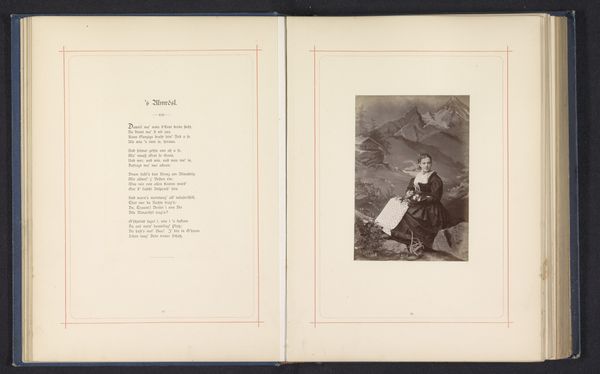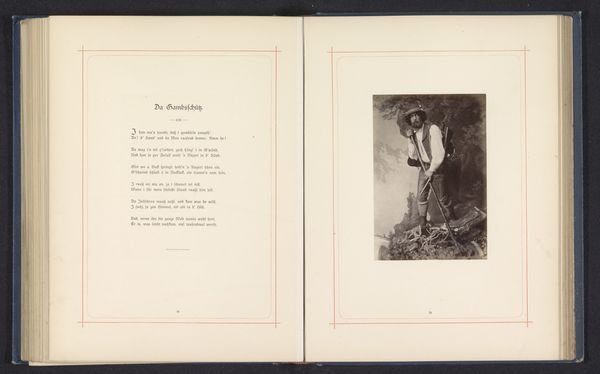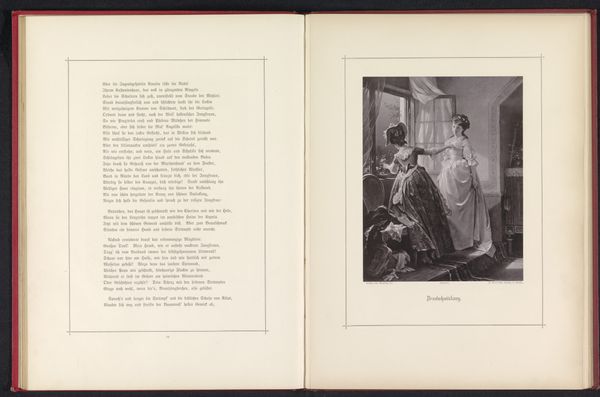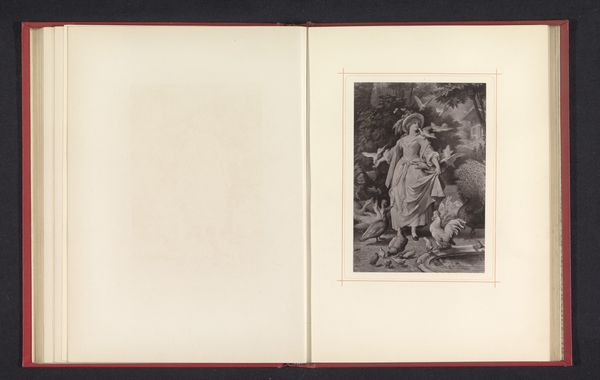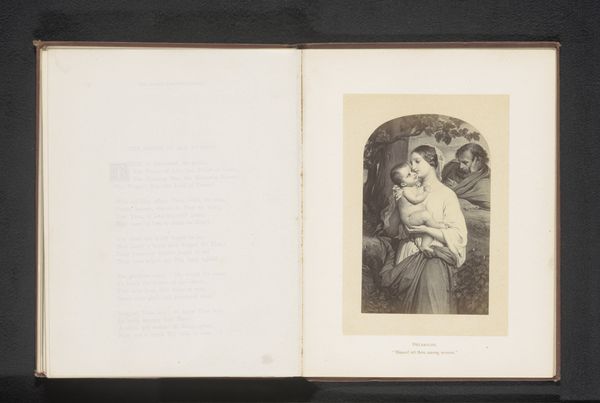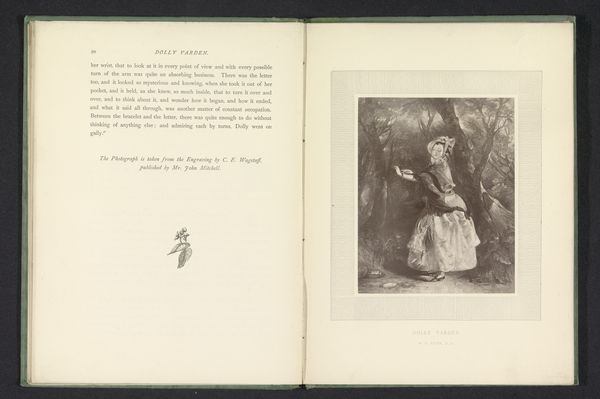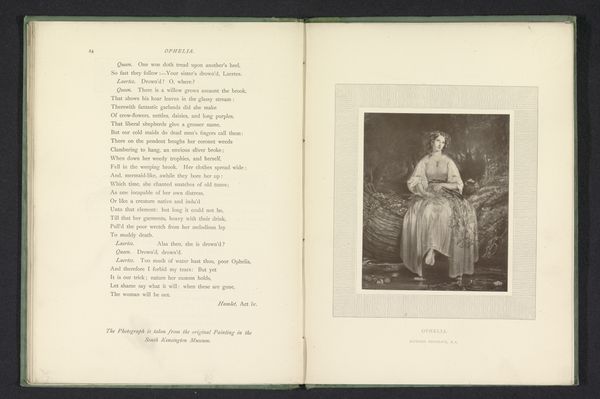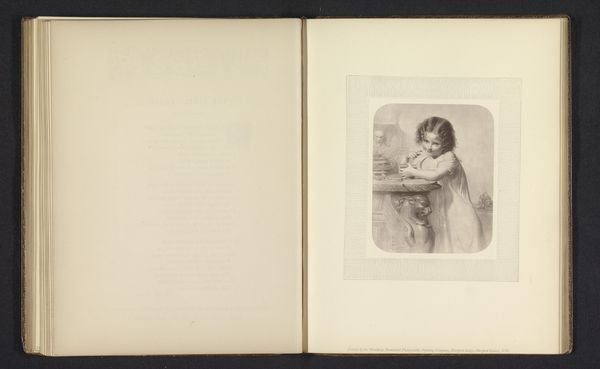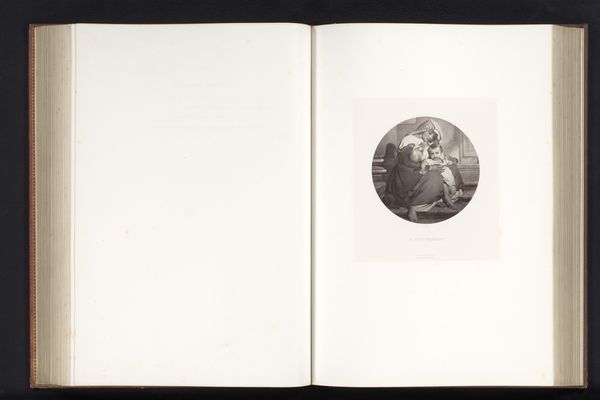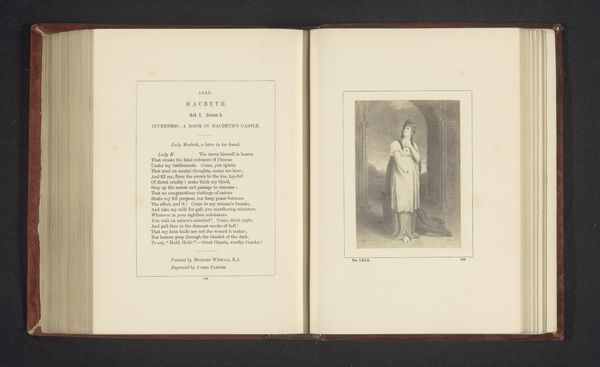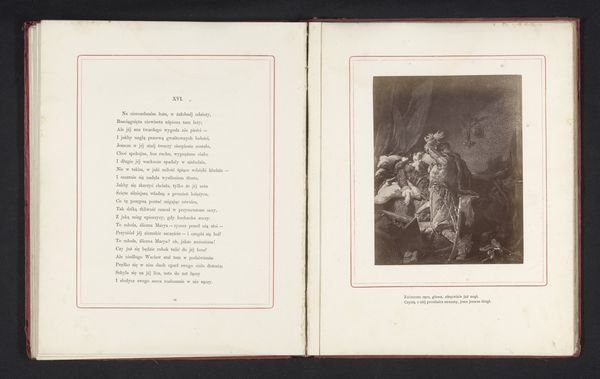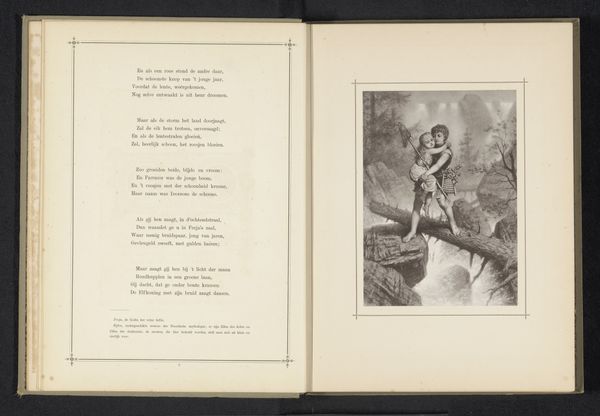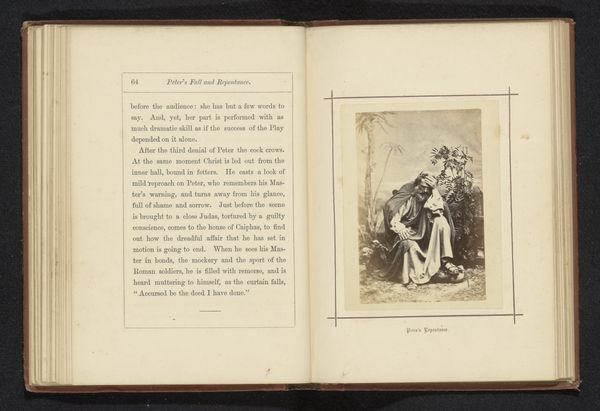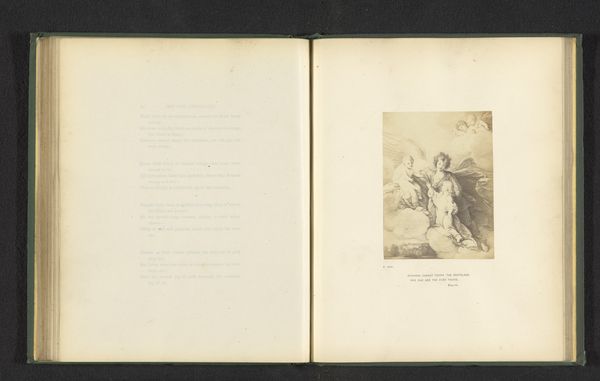
Studioportret van een onbekende vrouw in klederdracht voor een berglandschap before 1882
0:00
0:00
#
aged paper
#
homemade paper
#
script typography
#
hand drawn type
#
hand-drawn typeface
#
mountain
#
thick font
#
handwritten font
#
thin font
#
historical font
#
small font
Dimensions: height 127 mm, width 86 mm
Copyright: Rijks Museum: Open Domain
Curator: This studio portrait captures an unknown woman in traditional clothing, posed before a painted mountain landscape. The artwork is simply titled "Studioportret van een onbekende vrouw in klederdracht voor een berglandschap" and dates to before 1882. Editor: The mountain backdrop is a beautiful symbol of steadfastness behind a female figure who shields her eyes to see something further afield. I like the stark black-and-white tones. Curator: The photograph certainly reflects the cultural emphasis placed on rural identity at that time, romanticizing the peasant class and projecting ideas about regional virtue. The woman's traditional attire reinforces this ideal. Who was it intended for? Who was consuming this image of rural, mountain life? Editor: And notice the subtle echoes in the composition: the diagonal of her raised arm mimics the mountain's ridgeline. She *becomes* part of that enduring, stable landscape. Are we meant to read this photograph as a representation of strength and timelessness? The symbol of the mountains always does that for me. Curator: Yes, the idealized depiction obscures the realities of labor and hardship faced by women of her class. It serves to preserve and project a constructed regional identity and it’s worth remembering whose voices and experiences aren't included or validated in that projection. What stories of real working women get flattened here, for instance? Editor: Still, I am captivated by the enduring visual language present. Shielding one’s eyes represents vision and a striving for something beyond the immediate horizon. Curator: I find myself asking how our own era perpetuates similarly constructed and potentially harmful fantasies about labor and gender, class, or geography, and what possibilities are opened when we question or subvert those projections. Editor: This portrait speaks to our complex relationship to tradition, to enduring images, and the landscape. Thanks for helping me see it anew.
Comments
No comments
Be the first to comment and join the conversation on the ultimate creative platform.
